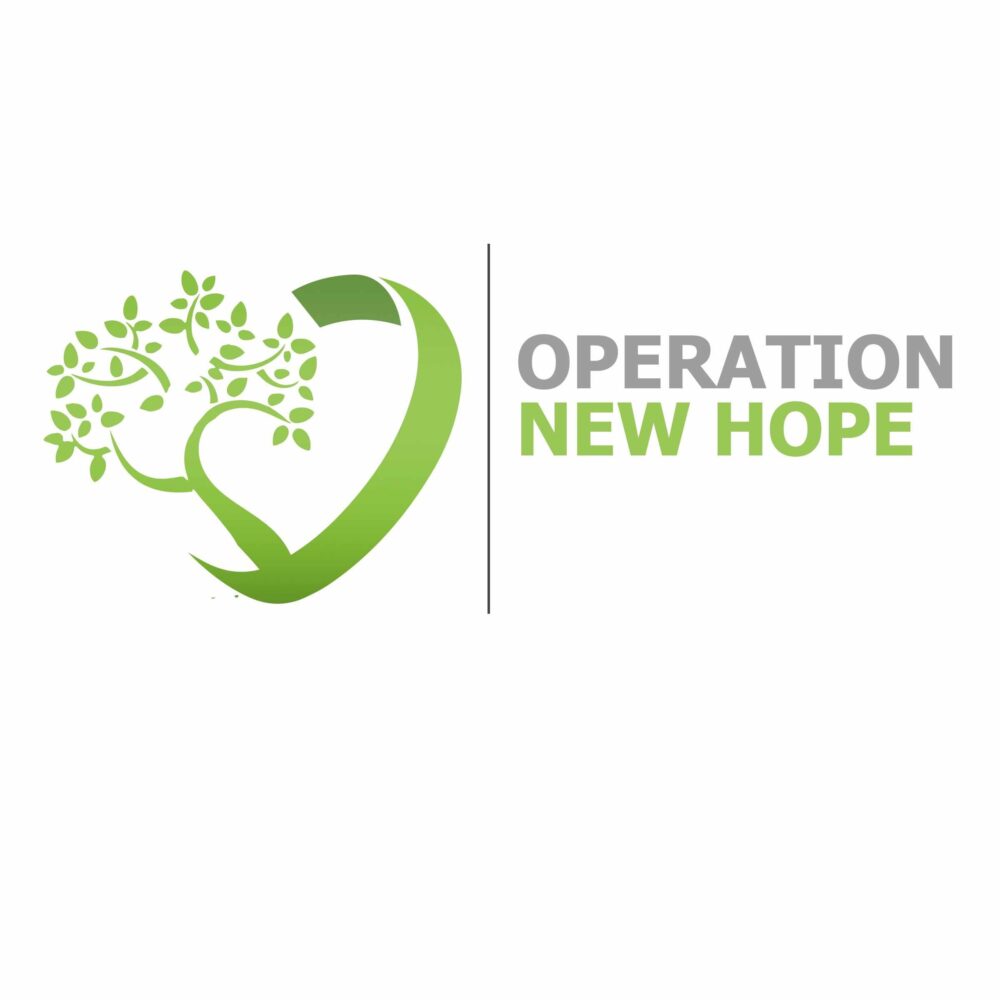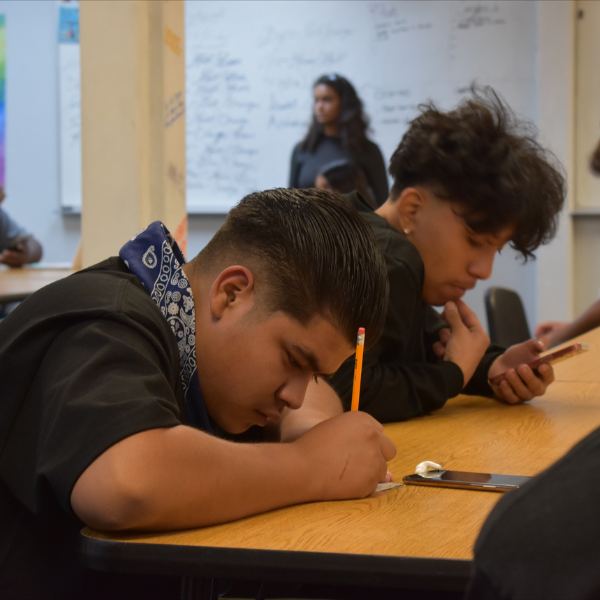Office of Juvenile Justice Delinquency Programs Rates ONH as an evidence-based model
 Program Profile: Operation New Hope
Program Profile: Operation New Hope
Evidence Rating: Promising – One study ![]()
Date: This profile was posted on July 20, 2012
This is a curriculum-based aftercare program designed to assist chronic, high-risk juveniles in their reintegration to the community after they are released from secure confinement. The program is rated Promising. Participants in the treatment group had a statistically significant lower number of rearrests and revocations and lower likelihood of substance use and associations with negative peers, compared with participants in the control group.
A Promising rating implies that implementing the program may result in the intended outcome(s).
Program Goals/Target Population
Operation New Hope (previously called Lifeskills ’95) is a curriculum-based aftercare treatment program designed to assist chronic, high-risk juveniles in their reintegration to the community after they are released from secure confinement. The program reinforces small successes while addressing their fears of the real world. The program is designed to treat improperly socialized juveniles by using a series of lifestyle and life skill treatment modalities in an integrated educational approach to healthy decision-making.
Program Theory
The program is grounded in the dynamics of William Glasser’s (1965) “reality therapy” approach. The approach used by the curriculum is based on six programmatic principles believed to help with reintegration:
- Improve the basic socialization skills necessary for successful reintegration into the community.
- Significantly reduce criminal activity in terms of amount and seriousness.
- Alleviate the need for or dependence on alcohol or illicit drugs.
- Improve overall lifestyle choices (social, education, job training, and employment).
- Reduce the individual’s need for gang participation and affiliation as a support mechanism.
- Reduce the high rate of short-term parole revocations.
These principles address the behavioral antecedents believed to be most responsible for failure to reintegrate. A juvenile’s inability to function and adapt to the norms of society is seen as a lifelong problem attributable to the early family socialization process and exacerbated by poor school performance, alcohol and/or illicit drug use, and strong attachments to negative peer groups (Josi and Sechrest 1999).
Program Activities
The treatment consists of 39 hours of programming completed over 13 consecutive weekly meetings that concentrate on different coping skills. There are 13 primary and 29 secondary program treatment topics. The 13 primary topics are 1) Program Introduction, 2) The “Pit”—Dealing With Your Emotions, 3) Unmanageability, 4) Denial, 5) The Problem of Thinking You Can Do It Alone, 6) “Letting Go,” 7) Perceptions, 8) Expectations, 9) Reality, 10) Love, 11) Family Dynamics, 12) Living With Addiction, and 13) Continuous Practice. Each session lasts approximately 3 hours. The first half of each session is used for lectures, while the last half of each session is used for group discussion.
Participants may begin the program during any point in the curriculum. Participation in a given session does not depend on attending the previous session for understanding, nor for progressing through the program.
Additional Information
Operation New Hope also operates a youth training program for at-risk youth age 17 to 21 years old. Before employment placement, staff conduct preemployment skills training and workshops that include topics such as interviewing, grooming, and educational/vocational requirements. The program is run in partnership with the County of San Bernardino (Calif.) Workforce Investment Board. Operation New Hope, in partnership with John Muir Charter School, also provides academic services to help youths attain their high school diplomas or GEDs. However, the effects of these portions of the program have not been evaluated.
Study 1
Rearrests
Josi and Sechrest (1999) found that participants in the treatment group who participated in Operation New Hope were less likely to be rearrested, compared with participants in the control group. At the end of the evaluation period, 32.1 percent of the treatment group had been arrested, compared with 53.9 percent of the control group. This difference was statistically significant.
Revocations
Participants in the treatment group had fewer revocations, or parole failures, compared with participants in the control group. At the end of the evaluation period, 34.9 percent of the treatment group had revocations, compared with 53 percent of the control group. This difference was statistically significant.
Substance Abuse
Participants in the treatment group were less likely to abuse substances, compared with participants in the control group. At the end of the evaluation period, 81 percent of the treatment group had no positive urine tests, compared with 48.5 percent of the control group. This difference was statistically significant.
Association with Negative Peers
Participants in the treatment group were less likely to associate with negative peers, such as former gang associates, compared with participants in the control group. At the end of the evaluation period, 43.4 percent of the treatment group reported fewer associations with negative peers, compared with 26.1 percent of the control group. This difference was statistically significant.
Study 1
The Operation New Hope (also known as Lifeskills ’95) program was evaluated by Josi and Sechrest (1999) using a quasi-experimental design with a nonrandomized treatment and a control group. The two groups were made up of juvenile parolees released from a secured facility between Feb. 1 and Dec. 31, 1995, who were assigned to the California Youth Authority’s (CYA’s) Inland Parole Office (which served both Riverside and San Bernardino Counties). If a juvenile reported a residence that was within a 25-mile radius of the Inland Parole Office at the time of release, he or she was placed in the treatment group. If the address was beyond the 25-mile radius, the youth was put into the control group. In this study, exactly 115 youths lived within the 25-mile radius, and 115 lived beyond the limit. However, during the evaluation period, nine parolees from the treatment group became involved in an additional program and were removed from the sample (n = 106 for the treatment group).
The overwhelming majority of participants were male—97.4 percent in the treatment group and 95.7 percent in the control group. The average ages were 20.0 and 20.2, respectively. The treatment group was 40.9 percent African American, 39.1 percent Hispanic, and 14.8 percent white. The control group was 50.4 percent Hispanic, 24.3 percent African American, and 20.0 percent white. There were no significant differences between the groups. The treatment group was required to attend all 13 Lifeskills ’95 classes, while the control group was not.
Data was collected through semi structured interviews and surveys of parolees, treatment facilitators, and parole agents. Random drug tests were also performed. Data was collected three times: 1) the first week after release, 2) after the treatment was complete (3 months after release), and 3) at the end of the evaluation period (Feb. 28, 1996). The CrimeSolutions review of this study focused on the results for the end of the evaluation period. At the end of the evaluation period, each juvenile assigned in the study had been on parole for a minimum of 3 months (those paroled in December 1995) to a maximum of 12 months (those paroled in February 1995).
There were several outcomes of interest examined in the study, including rearrest, revocation, substance abuse, and association with negative peers. Revocation was measured through parole failures, which was defined as dishonorable discharge, absent without leave or permission or missing, incarceration in juvenile hall or county jail, revocation for a technical violation, or revocation for a criminal violation. Data on parole failure and rearrest was obtained from the CYA’s Offender-Based Institutional Tracking System. Substance use was measured by examining the results of juveniles’ urine tests. Juveniles self-reported on their own reinvolvement with negative peer groups.
Chi-square analysis was used to test for statistically significant difference in outcome results between the treatment and control groups. Subgroup analyses were conducted to examine the difference in outcomes between treatment and control group participants who did not have revocations.
Operation New Hope manuals can be purchased through the program’s website. Training sessions are also available.

